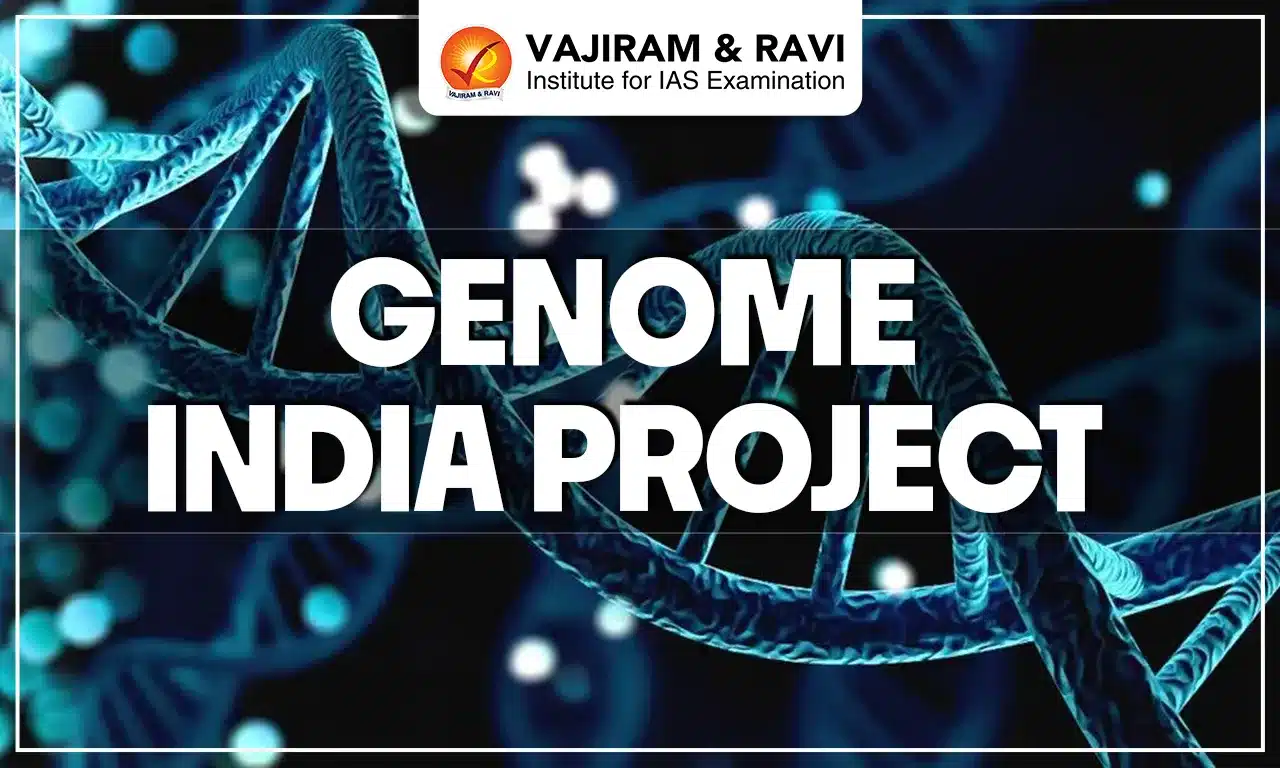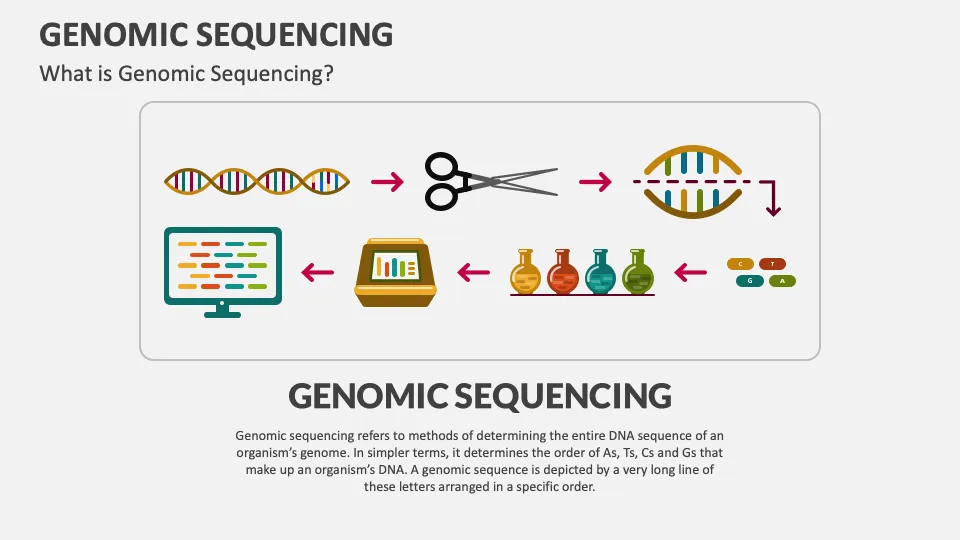The Genome India Project (GIP) is a pioneering initiative to create a comprehensive catalogue of genetic variations, capturing the unique diversity of the Indian population.
The Genome India Project (GIP) is a landmark national initiative that marks India’s entry into the era of precision medicine and population genomics. Funded by the Department of Biotechnology (DBT), Ministry of Science and Technology, it brings together over 20 leading research and academic institutions to map the country’s immense genetic diversity.
By sequencing 10,000 genomes from diverse ethnic groups, the project has created India’s first large-scale genetic reference database. This resource not only strengthens biomedical research and healthcare planning but also enables early disease detection, personalized treatments, and targeted therapies. The Genome India Project positions India at the forefront of global genomic research, advancing equitable healthcare and contributing to the nation’s growing bioeconomy.
Genome India Project About
Genome India Project was a pioneering scientific project funded by the Department of Biotechnology, Ministry of Science and Technology, Government of India.
The project marked a landmark collaboration of 20 academic and research institutions to drive a genomics-based health revolution for India.
The primary objective of Genome India Project was to build a comprehensive catalogue of genetic variations that reflect the unique diversity of the Indian population.
In collaboration with 20 science institutes led by the Centre for Brain Research (CBR) at IISc, Bangalore, GIP has mapped the genetic diversity of 99 ethnic groups.
This resource enhances understanding of human evolution, disease-related genetic markers, and therapies, while improving health outcomes and exploring India’s genetic diversity.
The project was completed in January 2025 and genomic data of 10,000 individuals was made publicly accessible.
Genome India Project : Understanding Genome and Genome Sequencing
A genome is the complete set of an organism’s genetic material, containing all chromosomes with DNA and genes. In humans, it comprises about 3.2 billion nucleotides and 23,500 genes. A gene is a sequence of nucleotides in DNA or RNA that carries heredity information. Genome sequencing determines the exact order of base pairs in DNA.
DNA consists of nucleotide chains with four bases: Adenine (A), Cytosine (C), Guanine (G), and Thymine (T).
Genome sequencing is crucial for treating genetic diseases, prenatal screening, cancer detection, pharmacogenetics, and personalized healthcare. Globally, countries like India, the U.K., China, and the U.S. have launched programs to advance genomic research and healthcare.
Genome India Project Features
The Genome India Project (GIP), a pan-India initiative inspired by the Human Genome Project, aims to map the country’s genetic diversity and support policy-making and healthcare planning. It has the following features:
Comprehensive Genome Sequencing: GIP aimed to sequence 10,000 human genomes, generating a dataset of approximately 8 petabytes, with each genome requiring around 80 GB of storage space.
Data Storage: All genomic data is securely stored at the IBDC in Faridabad, established by the DBT at the Regional Centre for Biotechnology (RCB).
The Genome India Project is funded by the DBT, Government of India, supporting its nationwide scope and cutting-edge research.
Nationwide Collaboration: The Genome India Project, led by the IISc’s Centre for Brain Research in Bangalore, collaborates with over 20 institutions across the country.
Creation of an Indian Reference Genome: The GIP seeks to develop an Indian reference genome grid, which will aid in identifying unique genetic variants within Indian population groups, paving the way for customised treatments and the detection of rare diseases.
Data Accessibility: The GIP dataset will be made available to researchers as a “digital public good,” promoting collaboration and ensuring it is accessible to the global scientific community.
Managed Access: The data will be made accessible only to research institutes that partner with the GIP, ensuring controlled and responsible usage of the data.
Ethical and Secure Data Management: The GIP follows a DBT-developed data-sharing policy ensuring ethical use and privacy of sensitive genomic data.
All data are anonymized, numerically coded, and not classified by caste or tribe.
Samples are encoded before upload and re-encoded before sharing, maintaining strict anonymity and preventing any privacy breaches.
Capacity Building and Technological Advancements: The Genome India Project has advanced bioinformatics capabilities, enhanced data analysis tools, and provided training to researchers, strengthening India’s genomic science ecosystem.
Genome India Project Goals Achieved
The GenomeIndia project has accomplished the following goals with which it was started.
A total of 20,000 samples collected from 83 diverse populations across India have established a robust biobank, providing a vital foundation for future genomic research.
Whole-genome sequencing of 10,000 samples has been completed, creating a comprehensive catalogue of India’s genetic diversity and paving the way for a representative Indian reference genome.
Whole-genome sequencing data from 10,000 individuals are archived at the Indian Biological Data Centre (IBDC), with access provided via the FeED protocol under the BIOTECH-PRIDE guidelines.
Genome India Project Key Preliminary Findings
Preliminary findings of the GenomeIndia project were published in the journal Nature Genetics recently.
Common and Rare Variants: Initial analysis has identified hundreds of millions of genetic variations.
Many of these variants are rare or non-existent in global genetic variant databases, highlighting the novelty of this project, and the samples being sequenced.
Genetic Variants: A total of 180 million genetic variants were identified from the sequencing of 9,772 genomes.
Of these, 130 million variants occur in the 22 pairs of autosomes, while 50 million are found in the X and Y sex chromosomes.
Medically Relevant Findings: We discovered important genetic findings in genes linked to common hereditary conditions like cholesterolemia and heart disease.
Some of these include new functional variants that could raise the risk of such diseases, offering valuable insights into the health risks specific to the Indian population.
Genome India Project Significance
The completion of the Genome India Project (GIP) will put India as a global leader in genomic research, driving the country to the forefront of scientific and medical advancements. By sequencing genomes across diverse populations, this project is set to revolutionize medicine, healthcare, and biotechnology.
Identification of Genetic Risk Factors for Diseases: The Genome India Project will help identify genetic risk factors specific to the Indian population, which are often underrepresented in global studies.
For instance, mutations like MYBPC3 (cardiac myosin binding protein C), linked to cardiac arrest at a young age, are found in 4.5% of the Indian population but are rare globally.
Another mutation, LAMB3, causes a fatal skin condition in nearly 4% of people near Madurai but is absent from global genetic databases
Enabling Targeted Treatments: The genome database will pave the way for the development of targeted treatments for rare genetic diseases.
For example, mRNA (messenger ribonucleic acid) vaccines being developed to prevent relapse in pancreatic cancer patients are based on genetic mutations that help some patients’ immune systems recognize and attack cancer cells.
Addressing Unique Genetic Anomalies: The Genome India Project seeks to identify genetic variations across diverse populations, facilitating personalized medical solutions and minimizing the risk of adverse drug reactions.
For instance, specific genetic variations in the Vaishya community in South India affect the processing of anesthetics, with the lack of a necessary gene potentially leading to fatal reactions.
Identifying these variants will aid in creating personalized medical solutions and reducing the risk of adverse drug reactions.
Inspiring Future Genomic Researchers: The Genome India Project inspires young researchers to innovate in genomics, advancing understanding of genetic health foundations and developing solutions for India’s unique health challenges.
Enhancing Bioeconomy: India’s bioeconomy has witnessed growth in last decade, rising from $10 billion in 2014 to approximately $130 billion in 2024, with forecasts predicting it will reach $300 billion by 2030.
Affordable Genetic Testing: The Genome India Project focuses on designing low-cost genome-wide and disease-specific genetic chips to enable affordable diagnostics and research.
It will facilitate early detection, monitoring of genetic diseases, and the development of tailored treatments.
Genome India Project Challenges
The Genome India Project, which has sequenced the genomes of a large and diverse population, faces several key challenges that need to be addressed for its success.
Fragmentation of Genetic Data: To maximize the impact of Genome India, genetic data from various organizations must be aggregated into a centralized system. This will enable better public health decisions and the development of affordable genetic tests.
Discrimination Based on Genetic Information: Without laws to prevent genetic discrimination, individuals may face issues like being denied insurance coverage based on their genetic profile. This could also affect families or communities sharing genetic variants.
Equity and Diversity in Genetic Data: The future aspects of the Genome India Project must ensure that all remaining sections of the population are equally represented in the genomic data. Otherwise, disparities in healthcare access could remain.
Ethical Use of Technology: The GenomeIndia Project has established strong measures to protect individual privacy.
However, there is a pressing need for clear and comprehensive ethical guidelines to ensure responsible use of genomic data and fair advancement of healthcare outcomes.
Genome India Project UPSC PYQs
Question 1. With reference to agriculture in India, how can the technique of ‘genome sequencing’, often seen in the news, be used in the immediate future?
Genome sequencing can be used to identify genetic markers for disease resistance and drought tolerance in various crop plants.
This technique helps in reducing the time required to develop new varieties of crop plants.
It can be used to decipher the host-pathogen relationships in crops.
Select the correct answer using the code given below: (UPSC Prelims 2017)
(a) 1 only
(b) 2 and 3 only
(c) 1 and 3 only
(d) 1, 2 and 3
Ans: (d)
Genome India Project FAQs
Q1. What is the Genome India Project?+
Q2. When was the Genome India Project launched?+
Q3. Which department supports the Genome India Project?+
Q4. How many human genomes has the Genome India Project sequenced?+
Q5. Where is the genomic data from the Genome India Project stored?+
Tags: genome india project
Previous Article
Biotechnology in Agriculture, Definition, Benefits, Applications, Concerns
Vajiram Content Team
Related Posts
Our Latest UPSC Courses
UPSC Sureshot Mains Test Series
₹25000



